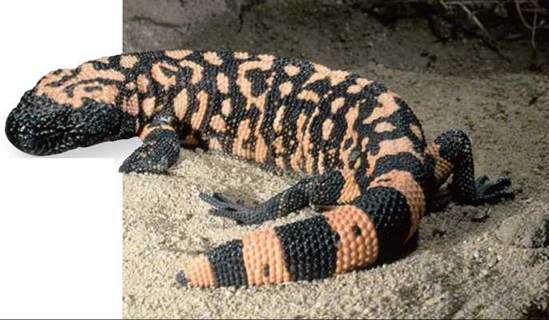THE LIVING WORLD
Unit Six. Animal Life
22. The Animal Body and How It Moves
22.3. Epithelium Is Protective
We begin our discussion of tissues on the outside.
Epithelial cells are the guards and protectors of the body. They cover its surface and determine which substances enter it and which do not. The organization of the vertebrate body is fundamentally tubular, with one tube (the digestive tract) suspended inside another (the body cavity or coelom) like an inner tube inside a tire. The outside of the body is covered with cells (skin) that develop from embryonic ectoderm tissue; the body cavity is lined with cells that develop from embryonic mesoderm tissue; and the hollow inner core of the digestive tract (the gut) is lined with cells that develop from embryonic endoderm tissue. All three germ layers give rise to epithelial cells. Although different in embryonic origin, all epithelial cells are broadly similar in form and function and together are called the epithelium.
The body’s epithelial layers function in three ways:
1. They protect underlying tissues from dehydration (water loss) and mechanical damage. Because epithelium encases all the body’s surfaces, every substance that enters or leaves the body must cross an epithelial layer, even one as thick as the gila monster’s in figure 22.3.
2. They provide sensory surfaces. Many of a vertebrate’s sense organs are in fact modified epithelial cells.
3. They secrete materials. Most secretory glands are derived from pockets of epithelial cells that pinch together during embryonic development.

Figure 22.3 The epithelium prevents dehydration.
The tough, scaly skin of this gila monster provides a layer of protection against dehydration and injury. For all land-dwelling vertebrates, the relative impermeability of the surface epithelium (the epidermis) to water offers essential protection from dehydration and from airborne pathogens (disease-causing organisms).
Types of Epithelial Cells and Epithelial Tissues
Epithelial cells are classified into three types according to their shapes: squamous, cuboidal, and columnar. Layers of epithelial tissue are usually only one or a few cells thick. Individual epithelial cells possess only a small amount of cytoplasm and have a relatively low metabolic rate. A characteristic of all epithelia is that sheets of cells are tightly bound together with very little space between them. This forms the barrier that is key to the functioning of the epithelium.
Epithelium possesses remarkable regenerative abilities. The cells of epithelial layers are constantly being replaced throughout the life of the organism. The cells lining the digestive tract, for example, are continuously replaced every few days. The epidermis, the epithelium that forms the skin, is renewed every two weeks. The liver, which is a football-sized gland formed of epithelial tissue, can readily regenerate substantial portions of itself removed during surgery.
There are two general kinds of epithelial tissue. First, the membranes that line the lungs and the major cavities of the body are a simple epithelium only a single cell layer thick. The first three entries in table 22.2 (1, 2, 3) are simple epithelium.
When you read the functions of each, you can see why these layers are only one cell thick—these are surfaces across which many materials must pass, entering and leaving the body’s compartments, and it is important that the “road” into and out of the body not be too long. Second, the skin, or epidermis, is a stratified epithelium composed of more complex epithelial cells several layers thick, 4 in the table. Several layers are necessary to provide adequate cushioning and protection and to enable the skin to continuously replace its cells. The epithelium that lines parts of the respiratory tract 5 also looks like stratified epithelium, but it is actually a single layer of pseudostratified epithelium. It looks like several layers because the nuclei are positioned in different places in the cells and so give the appearance of several layers of cells.
A type of simple epithelial tissue that has a secretory function is cuboidal epithelium, which is found in the glands of the body. Endocrine glands secrete hormones into the blood. Exocrine glands (those with ducts that open to the body’s outside) secrete sweat, milk, saliva, and digestive enzymes out of the body. Exocrine glands also secrete digestive enzymes into the stomach. If you think about it, the stomach and digestive tract are outside the body, because they are the inner canal that passes right through the body. It is possible for a substance to pass all the way through this digestive tract, from mouth to anus, and never enter the body at all. A substance must cross an epithelial layer to truly enter the body.
TABLE 22.2. EPITHELIAL TISSUE

Key Learning Outcome 22.3. Epithelial tissue is the protective tissue of the vertebrate body. In addition to providing protection and support, vertebrate epithelial tissues secrete key materials.